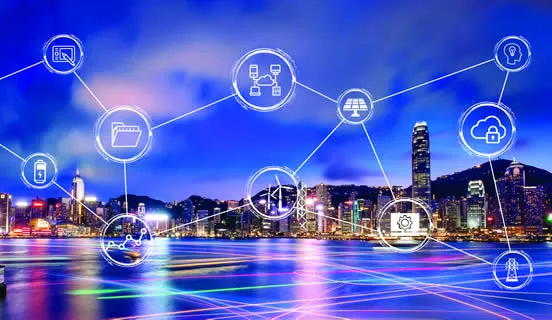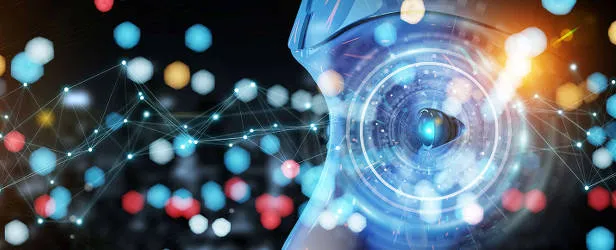August 22, 2019 | Podcast
Artificial Intelligence: keeping the lights on
Transcript:
Transcript:
NARRATOR 1 Welcome to the DNV Talks Energy podcast series. Electrification, rise of renewables and new technologies - supported by more data and IT systems, are transforming the power system. Join us each week as we discuss these changes with guests from around the industry.
Transcript:
NARRATOR 2 Hello, you’re listening to ‘Face the Facts’, the new current affairs podcast from DNV Talks Energy, where the world’s leading energy experts share their insights on the most important global news stories about the energy transition.
A significant power outage in the UK made headlines recently, as two of National Grid’s large power generators, a gas-fired power station and an offshore wind farm failed simultaneously and left nearly one million people without electricity.
This has raised questions about the impact of digital technologies and whether energy firms need to be more trusting of the data insights and algorithms that can enhance renewable energy generation in the future.
In this episode, Michael Wilkinson, Global Segment Leader – Energy Digitalization at DNV, explores how digital technologies such as Artificial Intelligence, machine learning and advanced analytics can streamline the move towards a Decentralized and Decarbonized energy system.
Transcript:
MICHAEL WILKINSON The energy industry has been in the news recently and this is because in the UK there’s been a pretty significant power outage. Nearly a million people were disconnected from the electricity system and this led to people being stuck on trains for up to nine hours. This is still under investigation but National Grid, the system operator, has come under pressure to quickly explain what’s happened. What the high-level picture is right now is that two power stations disconnected from the grid in pretty quick succession. That happens all the time, so power stations disconnect from time to time. The first one was a gas-fired power station that disconnected, dropped off the grid and that’s normal like I say but, what was unusual was, it was followed shortly after by another large generator, this time an offshore wind farm.
So, to me, this really highlights or brings to the forefront of my mind our reliance on electricity, but also the increasing complexity which is resulting from this energy transition towards a Decarbonized and Decentralized energy system. So Decarbonization – in DNV, we’re forecasting that up to 80 percent of the world’s electricity will be generated by renewable sources by 2050, and Decentralization because much of this generation is going to be connected much lower down in the grid at the distribution level.
Artificial Intelligence, machine learning and advanced analytics is seen as one of the technologies that has potential to solve some of these complex situations. So, there’s nothing new about advanced analytics. My first role in DNV was as an operational windfarm analyst. I used to work for windfarm asset managers, the asset managers would, at the end of each month, they would dash to the post office and send me a CD with the latest wind farm data. I would receive it the next day and do my analysis and make reports. These reports were trusted by the asset managers and they made decisions on the basis of them.
It’s fair to say I think that analytics has come a long way since then and some of the latest AI, machine learning technologies can do amazing things, so right from creating completely new photo, realistic images of animals or people who’ve never existed, through to things such as facial recognition is used in policing – picking people out from crowds and so on. But also, in virtual voice assistants as well, so in Alexa and Okay Google and Siri and so on.
These technologies bring some interesting questions with them and thinking about these virtual voice assistants, recent reports have shown that humans have actually been listening to some of the recordings and, you know, this has been to prove the quality of the voice recognition and that brings some interesting thoughts around are these algorithms good enough to start with? But then, it turns out that actually some of the voices were listened to by external contractors, so not even employees of these organizations themselves. So, is AI up to the job? Can we trust the results? But also, can we trust the algorithm makers to operate with integrity and keep our information secure?
In DNV, we surveyed nearly two thousand people from right across the power and renewables industry and asked them about some of these digital technologies and it’s clearly important and relevant because 87 per cent of those surveyed said that, of the power and renewables industry, said that they have a digital strategy and AI, machine learning, advanced analytics is a key element of the strategies.
In fact, 66 per cent said that AI is having an impact here within the energy industry. So, there’s many potential uses and many actual real applications right now, right across the power system so that’s right from forecasting and planning through operations, there is some metering but also demand side management, as well. So, in forecasting AI is being used to enhance the near-term forecasts of renewable energy generation, so you know how windy or how sunny is it going to be in the next few hours. That’s used to then balance the grid. AI is now pretty common to be used in that situation. In operations, we’re seeing AI being used to improve the accuracy of analysis of operational data.
We recently did a collaboration with the University of Edinburgh, and we got some of their mathematicians to tie-up with some of our domain experts and developed some new algorithms for identification of deviations from normal performance of wind turbines, and there we saw up to an 80 per cent time saving from the application of these artificial intelligence algorithms that we’d made. So, that’s pretty spectacular savings, but in doing that we also learned it’s also really important to make sure you bring your people along with that, as well. So, if you just present a new algorithm to an analyst and expect them to take it up straightaway, then that’s not going to work. You need to work with them to help to visualize some of the results and help them to see that the algorithms are having a benefit and so, this again, is about trust. People want to be able to feel confident that the algorithms, the analysis that they’re using is actually doing what they think it’s doing.
Then thinking to the consumption side, demand side management we’re seeing much more prevalence for this increasing demand side management. So, there was recently reports that supermarket fridges are being grouped together from across the country and they will then be turning off in response to signals from the grid. Also, thinking about different types of usage as well. Electric vehicles are increasing significantly and are forecast to do so even more in the near future, and if everyone drives home and work and plugs an electric car in at 5.30, then our distribution networks are not able to deal with that. You know, you can’t just put a whole load of new type of consumption in on the grid and expect that the grid can deal with it. So, demand side management is important there as well, and AI and machine learning and new types of analytics are key elements of making this demand side management more effective. One estimate that I saw put the savings from low flexibility at up to 15 billion dollars be saved by 2030 and that’s in the US alone. So, imagine what that’s going to look like when it’s scaled up.
So, what are our conclusions from this? Well, that survey I mentioned before, so 41 per cent of those respondents that we asked in the power and renewables industry said that data science is one of the top skills that they see as being needed in the future energy workforce. Another fact as well is that when people asked the utilities in the UK about their digital strategy, we saw that just one in five UK utilities could say that their digital strategy was really embedded in their business strategy. So, I think there’s more to be done in terms of making sure that people are trusting these algorithms.
So, to me, it seems there are many ways that AI, advanced analytics and digital technology can be used within the power system. But, at all times, I think we need to be mindful of its limitations. You know, it’s not magic, it’s maths, and so we need to approach it with a healthy level of skepticism. At the same time, when we’re talking about things like demand side management, we need to be really mindful of the way that people’s data is being used. We need to really trust that the algorithms are doing the right thing but also that the data and people’s information is being protected.
Thinking back to the wind farm asset manager – he used to send me data on CDs and receive my weekly reports. Would he still trust them if they were now produced by an AI algorithm? But more generally, with an ever increasingly complex electricity system, what would it take for you to trust the AI algorithms to keep the lights on?
Transcript:
NARRATOR 2 Thank you Michael for sharing such valuable insights. Today we heard three new unforgettable facts;
The energy transition is picking up pace, with up to 80 per cent of the world’s electricity expected to come from renewable energy sources by 2050.
Advanced technologies are already being utilized across the power system, with known use cases in forecasting and planning, operations, metering and demand management.
However, despite 41 per cent of global energy professionals confirming that data science will be a critical skill for the future workforce, more needs to be done to ensure that the renewable energy industry is making the most of these new technologies.
To hear more facts and opinions responding to the latest news from the global energy transition, listen again next week to DNV Talks Energy: Face the Facts.
Transcript:
NARRATOR 1 Thank you for listening to this DNV Talks Energy podcast.
Transcript:
To hear more podcasts in the series, please visit dnvgl.com/talksenergy.
Article
Link
Article
Digitalization and the future of energy
Article
National Grid feels the heat after power cuts
Article
How to dodge digital distress
Article
Using electricity at different times of day could save us billions of dollars
Article
AI-Driven Integration of renewable energy

Digitalization and the future of energy
An industry study that goes beyond the hype — to find out how to create value by combining digital technology, people and business strategy

New AI research centre in Shanghai
DNV has opened an artificial intelligence research centre in Shanghai as it seeks new solutions to enhance its audit, inspection and survey services.